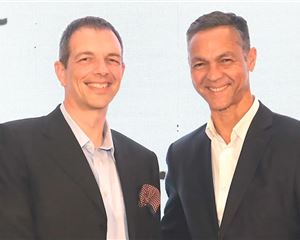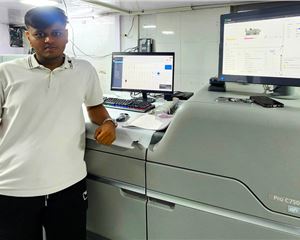Fun with print
Welcome back to the world where graphic designers turn commonplace into unique by, well, having fun with print. In November 2015, we featured four eclectic design works where basic print projects like wedding cards, calendars and school textbooks were injected with a fresh lease of life by taking a nifty approach., Business
10 May 2016 | By Payal Khandelwal
For part two, we have five graphic designers who talk to us about the making of projects that include a brochure, postcards, a personal graphic art series, a restaurant’s identity, and an installation for a corporate brand – all employing a different approach in terms of either format or design to stand out from the crowd. Read on...
Ankit Khurana
Ankit Khurana, who runs an independent graphic design studio called Pepperelektrik, did the brand identity and space design project for Ziu, a new Thai restaurant in Delhi. He speaks to us about the project in detail.

Ziu Restaurant
How did the idea come into being?
The concept of the restaurant was by an innovative chef who was inspired by the varied possibilities of Thai cuisine. It was our job to sensually interpret it and create an ambience where one could go through these palate-challenging dishes. We worked on the spatial graphics and brand identity for the restaurant, and also got involved in creating stationery, menu, serving aids like coasters and social media graphics as well.

Tell us about the making of the project
Our main challenge was to communicate with pure visuals and textures without interfering with the diner’s absorption of the concept. It had to be clean, and yet contrasting with the space they came from.

While working on client projects at their regular day jobs, graphic designers Pavithra Dikshit, Tosha Jagad and Poorva Shingre decided to start a side project called Postcard People to have some fun. The project’s main focus was to revive the idea of sending out postcards in a contemporary fashion. Postcard People instantly struck a chord with many people, and soon the trio was inundated with clients’ requests as well. We speak to Pavithra about what all they have done so far, and their plans going forward.

Postcard People
What was the inspiration behind Postcard People?


Tell us about the making of the project
Of the showcased projects, two are our personal collections and one is for a client. The first collection we did is called #LoveAndHate which started from the base idea that we were really tired of cheesy love cards and wanted to do something different. So we did a series of love and hate cards which you can gift to people you really love.

Kashmira Sarode
Bangalore-based illustrator and graphic designer Kashmira Sarode was approached by Wari Watai, a design firm that was handing an installation project for Asian Paints, to do the illustrations for the same. Read more about the project below.
Asian Paints- My City My Home
Tell us about how the project started
Every year Colour Next, Asian Paints launches a new range of colours and to introduce and demonstrate them to the public, Wari Watai (formerly known as Trapeze) comes up with strategic solutions and installations. One of the installations in 2015 was themed ‘My City My Home’ for which I was the commissioned illustrator. The concept was ideated to me by Ram Sinam and Trusha Sawant of Wari Watai.

The installation is an exploded view of a city’s neighbourhood. It is a discovery of varied ideas about transforming your neighbourhood. The circular space allows for an interesting way of displaying these interventions and viewing the neighbourhoods from a macro as well as micro perspective.

The space comes to life with colours from the palette and each intervention provides an interest area for different demographic.
Tell us about the making of the project

The biggest challenge with this project was the scale of it. The city map had a diameter of 22 feet. So it was extremely crucial that every single element was detailed enough to not look too big or too simple. Also, creating roughs and lay-outing the illustration on such a big area was quite time consuming as well. I had to create multiple roughs to get the sparseness of the buildings and other elements and their proportions to each other right. It took a little over three weeks to finish the entire project.
Khyati Trehan
Graphic designer Khyati Trehan works with Codesign Brand Consultants in New Delhi. When she was a student of publication design course at National Institute of Design (NID), she did a brochure for Artistes Unlimited, a platform for the promotion of the performing arts – with music at its core. Khyati talks to us about this project.

Artistes Unlimited Brochure
The subject of the content in the brochure was completely open, so I took up Artistes Unlimited (AU), a music choir that I was a part of. Founded by Annette Philip, AU was a first-of-its-kind platform that sought to promote young artists in a non-competitive environment in the city of New Delhi.



Shweta Malhotra
Shweta Malhotra is an independent graphic designer based in New Delhi. She started working on an interesting personal project called ‘Something Cool Everyday’ in 2014 as a design experiment. She created a graphic art piece per day for the entire year, and eventually showcased all the prints at an exhibition. Here’s what she has to say about the project.

Something Cool Everyday
How did the idea come into being?
It essentially came out as a form of personal expression with freedom to do what I want and experiment with graphic art in a way that you don’t always get to do with commercial projects. All my pieces were based on everyday life, with subjects ranging from fashion to travel to personal experiences and observations.














 See All
See All